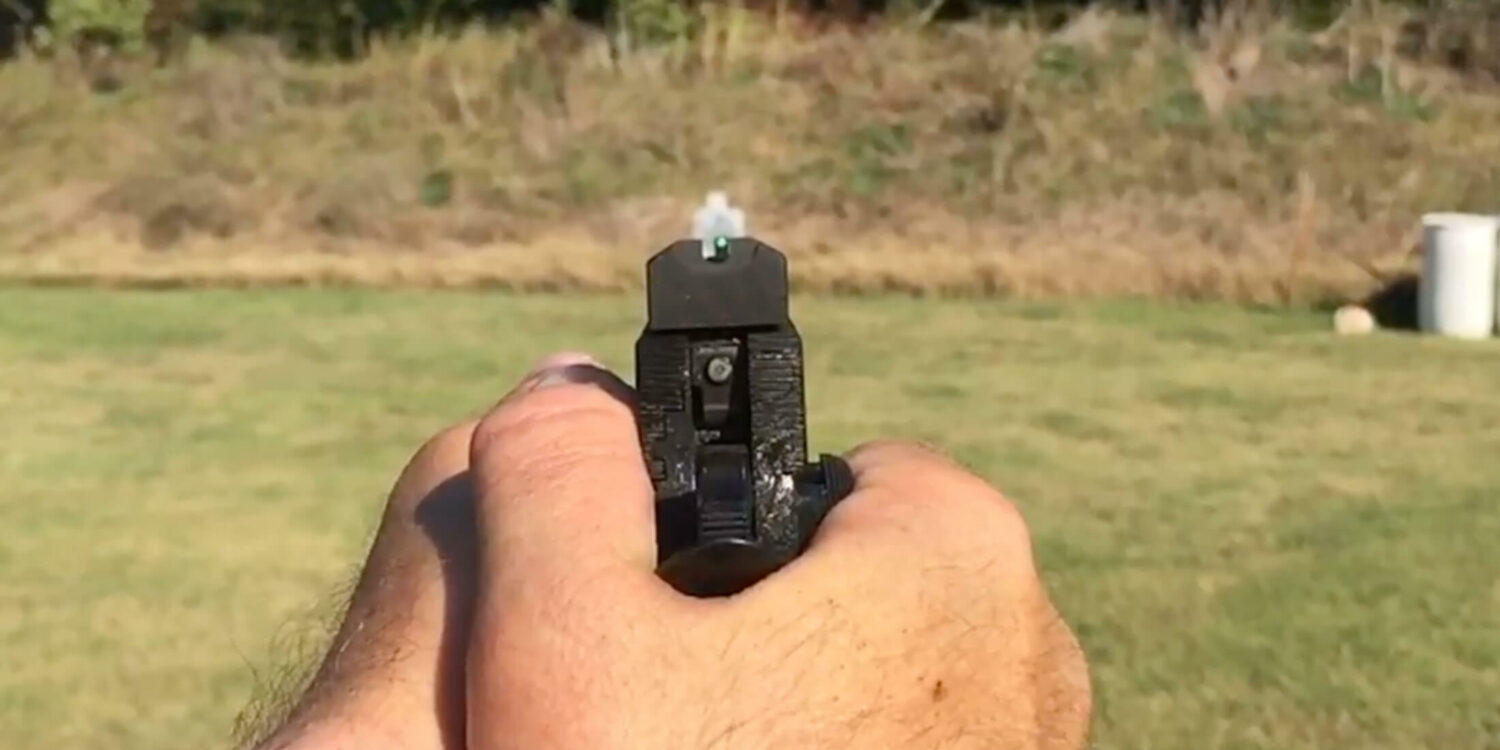Learn How to Call Shots Without Inspecting the Target
Calling shots is a very important skill for shooters - It's important to know if you hit the target without looking at the target at all.

Good shooters know when they pull the trigger whether they hit or missed the target. Great shooters know where they hit in relation to the center of the target when they pull the trigger. This is called “calling your hits” and is an incredibly valuable skill for any type of shooter, be it handgun, rifle, self defense, or competitive shooters.
Michael Seeklander has been absolutely killing it with his Daily Quick Shooting Tips series on his YouTube channel. This latest video clearly explains the concept of calling your hits, so I couldn’t resist sharing another one of his videos.
Calling Shots with a Handgun
Mike Seeklander
Mike Seeklander has a long history of involvement in the firearms Community. He is a former instructor for the Federal Air Marshal Service and still teaches to this day through online offerings and in person classes. He has placed or won many high level competitions in USPSA, IDPA, and Steel Challenge.
In order to be able to call shots with a handgun, shooters must focus on their front sight and know exactly where it is at the moment of the trigger pull, and don’t flinch or blink during the shot. This skill comes from sending lots of lead down range in a deliberate training fashion. Haphazardly shooting a gun without focusing on shooting fundamentals do not develop this skill. Shooters need to pay close attention to what their handgun does all the way through the shot.
Calling Shots with Iron Sights

Look at the above sight alignment. These sights are slightly off and the shot will go to the right, hitting the right side of the target or missing the target depending on the size of the target and the distance.

Meanwhile, this sight alignment is correct for a good hit on the target.
Skilled shooters need to be able to pay close enough attention to their front sights while shooting, they’ll know if their front is misaligned or centered. But not only should they be able to recognize if their sights are misaligned, but to which direction the sights are misaligned.
Calling Shots with a Red Dot Sight
Calling shots with a red dot mounted on the pistol is no different in concept than calling shots with an iron sighted handgun. However, red dot sights provide a mechanical advantage. There’s no need to pay attention to three focal planes and how they all line up with each other.
The red dot sight allows the eyes to remain target focused and simply confirm whether the dot is on target or not on target the moment the shot breaks.
How to practice spotting shots
In dry fire practice, pay attention to where the sights are on target for each shot. If you can see where the sights are for each trigger pull, then you’re able predict about where each shot would have landed if it were live fire. That’s a great step forward towards shot calling.
During live fire sessions, pay attention to the front sight during the shot – see the sight go up and back down during the entire recoil cycle of the gun. If you can see the sight go up and back down while shooting, you’ll be able to recognize the sight alignment at the moment the shot breaks.
A great training suggestion from Steve Anderson is to use a shot up un-pasted cardboard target, and put a fresh target behind it. Run drills shooting at the shot up target – which means you can’t see where the hits went by looking at the target. Before looking at the clean target on the back side, think where the shots went and try to predict where the hits are. Then look at the target to see if the prediction was correct.
All of the principles of calling shots also apply to rifles with iron sights as well as rifles and handguns with optics, though with optics it’s a little easier to call shots thanks to how red dots work.
Next time you’re at the range, pay close attention to your sights and try to call your own shots.
Written by Brian Purkiss - always a student, sometimes a teacher.
I don't consider myself a competition shooter - I think of myself as a performance pistol shooter. I am all about performing at as high of a level as possible. Towards that end, I am obsessive about learning how to perform. I spend a lot of my life learning from the best across the entire firearms world and even into other areas of performance and other sports. I am a USPSA Carry Optics Grandmaster, currently working towards my second GM title in the Open division.
Want more? Follow on Instagram, Facebook, or Email.
|